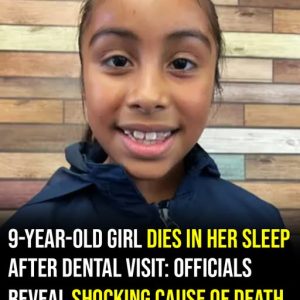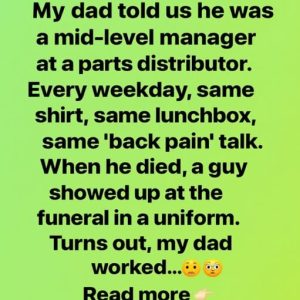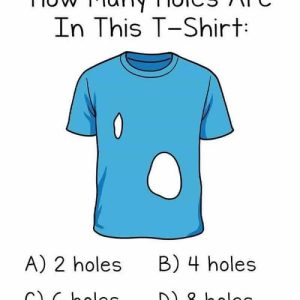Alara Quinn seemed to be just another quiet, competent pilot trainee — the kind instructors described with words like “steady,” “safe,” and “reliable,” and the kind of person other officers passed in the hallway without remembering her name. At RAF Lossiemouth, where brashness and bravado filled every hangar, she blended in so completely she might as well have been an unnoticed bolt on the flight line. At barely 5′3″, she looked more like an avionics tech than a combat pilot — soft-spoken, unassuming, and restrained. Her peers seldom paid any attention to her beyond her spotless paperwork and textbook-accurate flying. What no one suspected was that Alara was deliberately hiding — not because she lacked ability, but because she had learned early on never to show her full hand.
That hidden history began with her father, Commander Nolan Quinn, a legendary U.S. Navy F-18 pilot — one of the finest to ever fly off a carrier deck. Alara grew up in hangars, in simulators, and in the hush of briefing rooms where real war was taught quietly and precisely. From him she absorbed lessons not only in technical flying or aerial tactics, but also in discretion. He taught her to read radar sweeps before she learned fractions, to predict the shape of dogfight contrails before she learned to drive — and most importantly, he drilled into her: “Don’t show your full hand unless the sky turns hostile.” When he died in a training accident over the Adriatic, something inside Alara receded. She withdrew inward, became smaller, quieter, more controlled. She flew exactly what her training required — never more, never less — keeping her father’s voice alive in her disciplined restraint.
During her training evaluations, the verdict was always the same: competent, conservative, safe — but lacking “combat instinct.” Instructors and peers alike assumed she lacked the spark needed for air‑to‑air combat. And she let them believe it. That invisibility, she felt, kept her safe, and in a sense kept her father with her. She buried ambition beneath checklists and procedures, never volunteering for extra drills or risky maneuvers, never drawing attention. Her steady competence gave no hint of the skills she carried in private — dogfight geometry memorized in childhood, covert training sessions, mental simulations of adversaries and kill-runs. Her silence was her shield.
All that changed on the morning of a routine patrol. The sky over the North Sea was pale gold as early sunlight brushed the tarmac. Alara climbed into her F‑16C, performed her private ritual of touching the nosecone and whispering a quiet greeting to the machine — “Morning, girl.” Her wingman, Captain Rowan Beck, greeted her with the kind of swagger and caffeine-fueled confidence typical of his type: “Quinn! Try to fly like you mean it today.” She smiled, nonchalant: “Try not to break formation for once.” The mission was supposed to be a simple, routine sweep toward the northern ADIZ (Air Defense Identification Zone) — nothing unusual. Then, twenty minutes into the flight, her radar lit up and a subtle pressure blossomed in her chest. Her instincts — the “Sky Whisper,” as her father had called it — whispered something wrong, something dangerous.
What followed was chaos: eighteen high‑speed contacts sweeping toward them at alarming speed, crossing into restricted airspace. The radar blared warnings. Captain Beck at first refused to believe it — until the threat became undeniable. Then came the order: “Break!” But Alara had already begun. In that moment, the quiet, invisible pilot vanished. In her place stood the warrior her father had trained — the pilot who saw dogfights not as random chaos but as geometry and rhythm, as controlled violence. With split‑second timing she unleashed maneuver after maneuver: violent split‑S, tight scissors, baiting missiles into overshoot, vertical climbs, G‑pulls, negative‑G dives that defied conventional limitations. Her first missile found the lead Su‑27 — before that pilot comprehended what hit him. Then another, and another. The cold morning sky bloomed with fire. She downed flight after flight, enemy jets spiraling down in flames. Within minutes — within what felt like a lifetime — she had claimed twelve kills. Twelve.
When she landed, the base fell silent. Mechanics, pilots, everyone stared. For weeks, every evaluation, every simulation, every flight had said she was “steady but unremarkable.” But now, as she climbed from the cockpit — her jet scarred, pitted with shrapnel, canopy paint blistered from missile exhaust — she stood steady but pale, like someone who had just reached the edge of mortality and come back. Captain Beck, shaken and awed, pulled her into a stunned embrace: “You’re insane. And you saved my life.” In debriefings, a classified panel of officers and intelligence officials watched her maneuvers in slow motion — silent, incredulous, baffled. “Your evaluations don’t match the pilot we see here,” they told her. When she spoke of her father, of years hidden training and silent readiness, of the philosophy to stay small until necessary — the room shifted, quietly but irrevocably.
In the days that followed, Alara received a formal reprimand — a mere formality, they said — but also a covert invitation into something higher, darker, necessary: a program known unofficially as The Obsidian Line. An elite group of pilots who worked in the shadows — stopping wars before they started. She stood before her new aircraft before dawn, stepping into a flight suit bearing a single emblem: a white-bordered downward-pointing triangle. In that suit, in that cockpit, Alara felt something she hadn’t felt since the day her father died: not fear or grief, but purpose. She whispered to the jet: “Let’s keep them safe.” And with that whisper, she lifted off — into a sky that finally knew her name.




